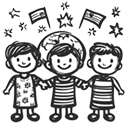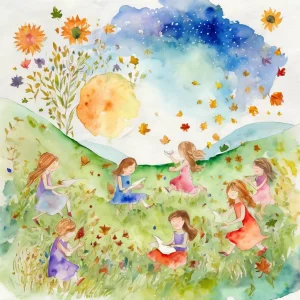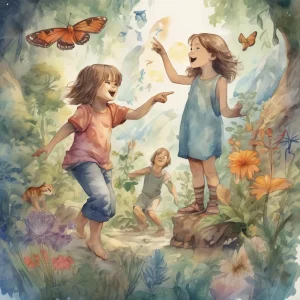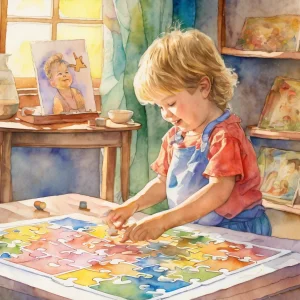Activity
Similar Activities
Whispers of the Seasons: Seasonal Collage Exploration
Children’s Age: 5–6 years
Activity Duration: 10 minutes
Engaging activity where children create collages representing different seasons.
Activity Duration: 10 minutes
Cultural Creatures: Stop-Motion Animation Adventure
Children’s Age: 4–9 years
Activity Duration: 10 – 25 minutes
An interactive activity using technology to create stop-motion animations exploring plants and animals from diverse cultures.
Activity Duration: 10 – 25 minutes
Shadow Hunt and Solar Exploration
Children’s Age: 5–6 years
Activity Duration: 10 – 30 minutes
An activity combining Physics, Space, and Ecological Awareness for children aged 5-6 to explore shadows and solar energy.
Activity Duration: 10 – 30 minutes
Enchanted Tales: Family and Friends Story Theater
Children’s Age: 2–7 years
Activity Duration: 10 – 25 minutes
An interactive storytelling activity promoting language, academic, and social development.
Activity Duration: 10 – 25 minutes
Cosmic Conundrum Chefs: Space Word Problem Adventure
Children’s Age: 7–8 years
Activity Duration: 10 – 20 minutes
Let's play Space Word Problem Chefs! We'll use paper, pencils, and space-themed stickers to explore language and problem-solving. Set up a cozy spot, grab your supplies, and get re…
Activity Duration: 10 – 20 minutes
Sensory Treasure Hunt: A Magical Exploration Journey
Children’s Age: 0 month – 6 years
Activity Duration: 10 minutes
Let's go on a Sensory Treasure Hunt! We will use our senses to explore different items like textures, scents, and sounds. You can feel, smell, and listen to each item while blindfo…
Activity Duration: 10 minutes
Enchanted Digital Family Storytime Journey
Children’s Age: 6 months – 1.5 years
Activity Duration: 5 minutes
Engage your child with "Digital Family Storytime," a captivating activity tailored for children aged 6 to 18 months. Through interactive storytelling on a tablet or smartphone, thi…
Activity Duration: 5 minutes
Enchanted Coding Adventure Storytelling with Imagination
Children’s Age: 10–12 years
Activity Duration: 45 minutes
The "Coding Adventure Storytelling" activity is tailored for children aged 10-12 to enhance empathy, play skills, language abilities, and introduce basic programming concepts in a …
Activity Duration: 45 minutes
Enchanted Musical Story Time Adventure
Children’s Age: 2–2.5 years
Activity Duration: 5 – 15 minutes
Join our "Musical Story Time Adventure" for children aged 24 to 30 months! This interactive activity boosts cognitive skills, cultural awareness, and language abilities through spo…
Activity Duration: 5 – 15 minutes
Holiday Sensory Bottle Activity: Sparkling Winter Wonderland
Children’s Age: 3 – 6 months
Activity Duration: 5 minutes
Engage babies aged 3 to 6 months in a holiday sensory bottle activity designed to stimulate their senses and support language development. Gather simple materials like a plastic bo…
Activity Duration: 5 minutes
Enchanted Nature Scavenger Hunt with Communication Twist
Children’s Age: 3–4 years
Activity Duration: 20 minutes
The Nature Scavenger Hunt with Communication Twist activity is perfect for children aged 36 to 48 months to enhance their language and communication abilities while exploring the o…
Activity Duration: 20 minutes
Whispers of Love: Family and Friends Puzzle Match
Children’s Age: 3–4 years
Activity Duration: 10 minutes
"Family and Friends Puzzle Match" is designed for children aged 36 to 48 months to boost self-care skills, language development, and comprehension of family and friendship concepts…
Activity Duration: 10 minutes






























